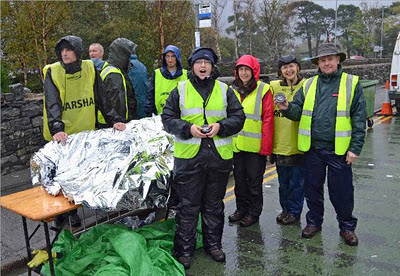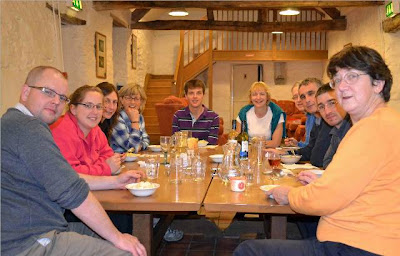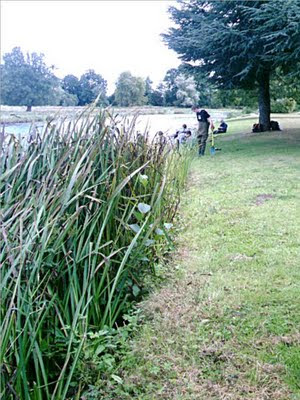We (almost) always work outside but some work sites are more open than others.....
Thirteen volunteers turned out on a day with a mixed weather forecast. We had tools for a back up plan of Rhodibashing - but the latest forecasts were ok, and the sky looked cooperative - so we proceeded with the primary task - removing a redundant fenced enclosure from the top of Kinder Scout.
As we have done on previous occasions we hitched lifts in land rovers to Edale cross - and were reminded how strange it is that people go "off roading" for "pleasure"+. We then walked north along the pennine way for a while before heading off nearer to the edge of the plateau.

We were told that the area in question was badly burnt in the 70's and was fenced to keep the sheep out while regeneration work was attempted. Initial re seeding was done by hand and later when the technology became available heather seed was sprayed over the area from a helicopter, (the seed is fine enough to go through the jet of a crop sprayer). As the area is now reasonably well vegetated and because theoretically sheep are no longer grazing up there, the fence surrounding this patch was redundant.
So we removed it - we split into two groups and worked our way round in both directions - dismantling the fence and collecting the materials in to piles.
The larger "king" posts were left as "perches for birds of prey".
The resulting materials will be reused where possible on the estate.
At the end of the day a few examples of a club moss were spotted by one of the wardens. This "plant" has been spotted in a few places in the last few years on the estate - it is apparently a clean air indicator and was absent for about 120 years. I tried to photograph it - but my camera was selected for robustness and I didn't get a useful image.
As we had plenty of volunteers there was time for a pleasant walk down - avoiding the rough ride and seeing how some of the places we have worked actually fit together into the landscape.

















































